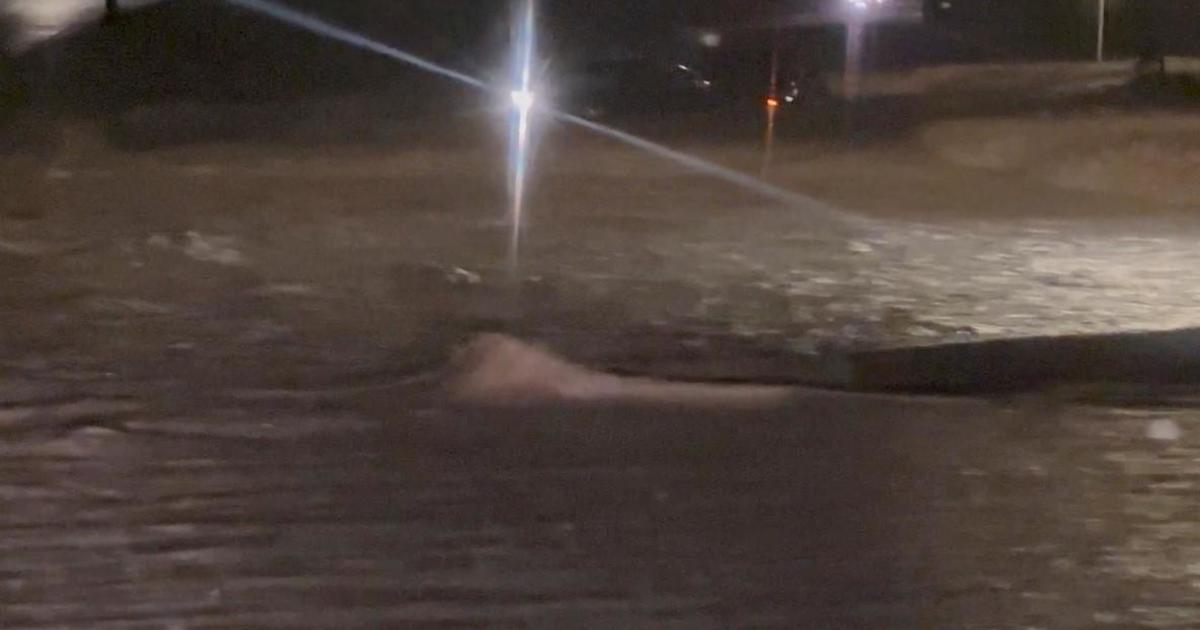Roswell, New Mexico experienced devastating flash floods on Saturday following record rainfall, resulting in significant damage, loss of life, and widespread rescue efforts. The unprecedented downpour, totaling 5.78 inches—shattering the city’s previous daily record—transformed streets into raging rivers in a matter of minutes. This catastrophic event led to the deaths of at least two people and forced hundreds to evacuate their homes, highlighting the urgent need for improved flood preparedness and response strategies in the region. The swiftness and intensity of the flooding overwhelmed even experienced first responders, underscoring the unpredictable and potentially deadly nature of such weather events.
Devastating Impact of the Flash Floods
Loss of Life and Injuries
The flash floods claimed at least two lives, with details regarding the victims and the circumstances of their deaths still under investigation. Numerous other individuals suffered injuries requiring hospitalization, adding to the tragic toll of the event. The severity of these losses emphasizes the critical danger presented by flash floods and the importance of prioritizing safety during severe weather events. Local residents recounted harrowing experiences, witnessing their homes and neighborhoods submerged rapidly, highlighting the lack of time for adequate preparations or escape in many instances.
Widespread Property Damage
The sudden and forceful nature of the floodwaters caused significant damage to both residential and commercial properties throughout Roswell and Chaves County. Numerous homes suffered basement flooding, and countless vehicles were either damaged or completely swept away. The flooding also damaged essential city infrastructure, including the loss of three fire trucks. This significant infrastructure loss further hampered rescue and recovery operations, and repairing this damage will pose a considerable challenge to the community in the aftermath. The city’s downtown area was particularly hard hit and road closures prolonged the challenges of rescue efforts and further delayed access for aid.
Heroic Rescue and Relief Efforts
National Guard’s Vital Role
The New Mexico National Guard played a crucial role in the rescue and recovery operations. Over 309 individuals were rescued from inundated areas, with 38 requiring medical treatment for injuries sustained during the floods. The swift water rescue teams, utilizing specialized tactical vehicles capable of traversing floodwaters, proved invaluable in reaching stranded individuals and providing assistance where conventional vehicles could not operate. The commitment of these guardsmen, working tirelessly around the clock, significantly mitigated the loss of life and aided in evacuations and relief efforts. Their continued presence ensured sustained support and assisted recovery efforts as they worked diligently to aid victims.
Community Response and Collaboration
The response to the flooding demonstrated a remarkable degree of community collaboration and support. Local residents assisted in rescue efforts where possible, and a shelter was set up at the Eastern New Mexico State Fairgrounds to provide displaced residents with refuge and basic necessities. The collaborative efforts between the National Guard, law enforcement, emergency services, and the community underscored the importance of collective response in mitigating the impact of such disasters. The unified efforts significantly eased the suffering of many and offered crucial aid and solace to the flood victims. Shared efforts across multiple levels of government and community actors aided in creating an efficient disaster response operation.
Unprecedented Rainfall and Weather Forecasting
Record-Breaking Rainfall
The sheer volume of rainfall—5.78 inches in a single day—surpassed all previous daily records for Roswell, exceeding even the 1901 record of 5.65 inches. This unprecedented rainfall overwhelmed the city’s drainage systems, underscoring the inadequacy of existing infrastructure to handle such extreme weather events. The dramatic shift from a relatively dry period to record breaking rain in a 24 hour time frame further added to the severity of the situation and overwhelmed the existing disaster response planning. The event serves as a powerful indicator of how critical it is to consider increasingly intense weather phenomena when planning city infrastructure.
Future Weather Predictions and Preparedness
Meteorologists warned of continued risks of further rainfall and potential flash flooding in the days following the initial storm. This warning highlighted the continued need for vigilance, caution, and heightened awareness amongst residents, especially considering the saturated state of the ground and its reduced ability to absorb more rain. Given the likelihood of increasingly erratic and intense weather patterns due to climate change, investing in stronger, more reliable flood mitigation strategies in urban and regional planning is essential to reduce the potential for further loss of life and property damage. Such planning necessitates a paradigm shift in anticipation of more frequent events of greater magnitude.
Takeaway Points
- The Roswell flash floods serve as a stark reminder of the destructive power of extreme weather events and the need for robust disaster preparedness plans.
- The heroic efforts of the National Guard and the collaborative community response were critical in saving lives and minimizing the overall damage.
- The unprecedented rainfall highlights the importance of reviewing and upgrading infrastructure to handle more extreme weather patterns.
- Improved weather forecasting and public awareness are vital to enhance community resilience and reduce future risks.
- Long-term investment in flood mitigation measures, including improved drainage systems and community education programs, is essential for safeguarding lives and property in flood-prone areas.









